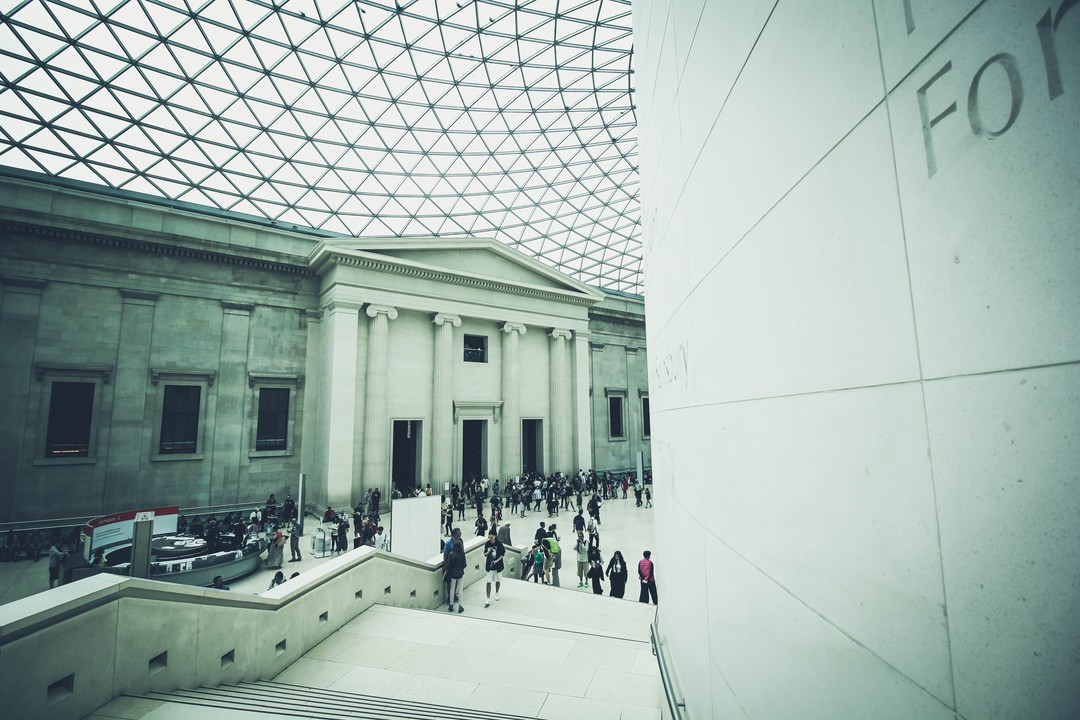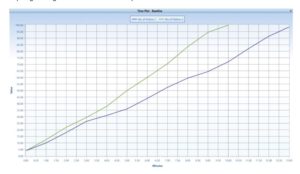Visitor centers are the unacknowledged MVPs of touristic attractions. A well-designed visitor center can increase visitor satisfaction, build visitor excitement, and improve the safety and security of the site. They can house security checks, ticketing, bathrooms, baby-changing stations, gift shops and other auxiliary and administrative services . While some places may not have the room or money for a whole separate structure, specific areas set aside at the venue’s entrance can work perfectly well as a visitor center as well. However, our previous observations at open and semi-open World Heritage sites have shown that a separate visitor center building is better choice for controlling entrance and exit areas.
A visitor center helps manage visitor flow as it evens out visitor arrivals for the entire venue. While utilizing a reservation system and appropriate pricing can also help “smooth-out” daily demand, visitor arrivals can still be “bulky” throughout the day. For example, visitors from a large cruise ship often arrive in large groups and usually at the same time. A visitor center can hold and entertain visitors who come at peak hours by providing a show as the first step of their visit. This organically limits the amount of people entering the site all at once, thus leading to a less-crowded site. It can also lessen the time visitors have to spend in the site’s “bottleneck” locations, especially if the center is designed according to a design day. Signs and map displays at the visitor center can make it easier for visitors to visualize where to go in the venue.
Helpful Queues: How a Queue Can “Work” for You
Together, effective demand management and a visitor center should minimize the need for queues. But with peak day management comes the equally important queue management. In general, having to wait a long time diminishes a visitor’s experience. However, at certain times, queues are unavoidable because the time it takes for each visitor to pass through a “resource” (for example, a bag check) will be different. In fact, queues before bottleneck areas are even desirable for dealing with peak-visitor points, such as bag checks. Because bottleneck areas limit the number of visitors that can be served at a time, these areas must be kept “full” at all times.
For example, bag check time per visitor varies based on whether the visitor has a bag or not, bag size, and readiness of the visitor. When there is such a randomness in processing times, there should be enough visitors waiting in front of the bag check (the bottleneck location in this case) so that the security guard is never idle when a visitor departs. This concept, known as the “Drum-Buffer-Rope,” has been used since the 1980s in “lean manufacturing.” Let’s examine this concept further in a WHS setting.
On a typically busy day, approximately 100 visitors queue at a WHS entrance. Visitors go through a ticket check where their prepaid tickets are scanned and then walk through a security check for their bags. Ticket scanning takes 5 seconds per visitor on average but timing greatly differs between one visitor to the next. Meanwhile, security checks take 3 seconds on average for visitors without bags. However, a quarter of the visitors in line have bags, and take 12 seconds instead of 3 seconds. But there is a large variance from one visitor to the next. This makes the security check operation a “bottleneck”, where the expected time is 5.25 seconds (because it is greater than the ticket-scanning time of 5 seconds). Let’s assume that these operations are next to each other and there is no area where visitors can wait between the two operations. In this case, it will take approximately 13 minutes to get all 100 visitors into the site.
Now let’s assume that there is an area between the ticket check and the security check where up to 10 visitors can queue up. In this case, even though the scanning and security checking times remain the same, 100 visitors can be processed in 10 minutes, almost a 25% improvement. In other words, the queue in between these two operations increases the process capacity by 25% without changing anything else. Figure 1 below shows this comparison.
Figure 1: Number of visitors processed vs. time elapsed when there are 100 visitors queued up prior to opening
The difference is due to the “buffer” between the two operations, which decouples the “bottleneck” operation by providing the next visitor for the bottleneck resource (i.e. security check), hence maximizing the utilization of the bottleneck resource. The animation below helps demonstrate more clearly the effect of “decoupling” the lines.
Figure 2: Non-Buffer Line vs. Buffer Line with number of clients served
Some other considerations to keep in mind include:
- Waiting space: There should be at least 7 square feet (approximately .65 square meters) of space per person to allow visitors to queue comfortably.
- Entertainment: There should be entertainment of some sort (i.e. video presentations, interactive displays, etc.), while visitors are waiting.
- Queue Information: As seen in many theme parks, informing visitors about the length of wait time could be useful – as long as the estimates are longer than the actual wait times. A visitor expecting 30-minute wait would be happily surprised if the actual wait time is 20 minutes, whereas if the expected wait was 15 minutes, an actual wait time of 20 minutes would cause anger.
Having a visitor center is a must-have if you want better visitor flow throughout your site (not to mention happier visitors). To further optimize your visitor center, queue management techniques, such as the “Drum-Buffer-Rope” technique, can make a huge difference. But the visitor center is not the only place where these techniques are useful. In our next series we will explore this concept in more detail and look specifically at ticketing queues and alternatives to reduce wait times for ticketing and entry operations.
Stay up to date KCG’s blogs here and designing a visitor flow plan of your site, check out our previous blog.
If you or anyone you know is interested in learning more about these techniques and how to implement them, please contact us via LinkedIn or our website.


